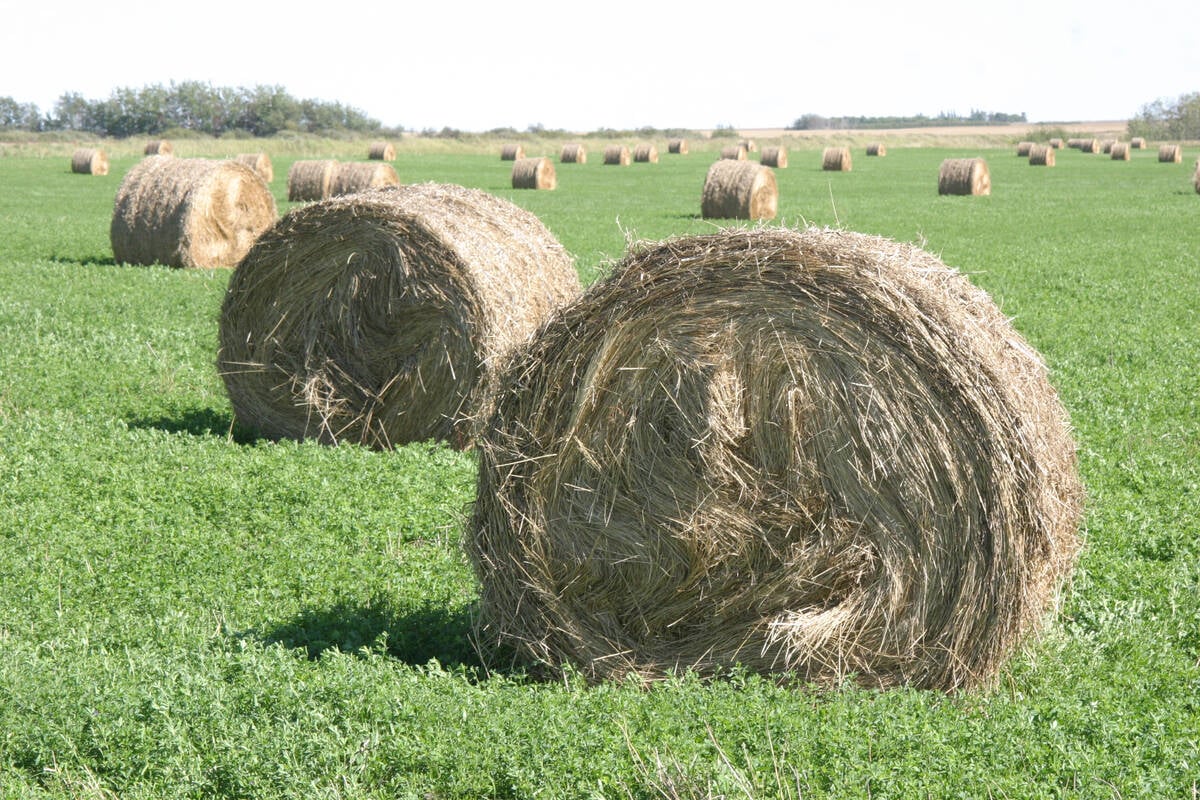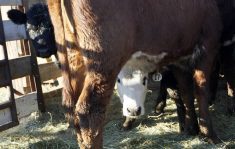Many people think goats are hardy animals that can survive in the desert on a diet of thorns, but inadequate nutrition is the biggest problem facing producers.
“Veterinarians always talk about the disease and bugs, but nutrition is probably the biggest problem,” said Dr. Reuben Neumier, a veterinarian and sheep farmer from Virden, Man., who has extensive experience with small ruminants.
“Number one is the old wives’ tale that goats will eat anything. You can’t feed them garbage because they are not going to eat it and they are not going to live on it.”
Read Also

Breaking down successful winter feeding into six steps
It’s that time of year when it is important to start planning for a cow herd’s winter feeding program. Here are six steps I think are necessary to consider when getting your feed tested.
He said producers who are new to the business or those who buy a handful of goats to keep as pets are most likely to neglect this important consideration.
“In fact, a goat should be treated like a dairy cow for half the year and a beef cow for the other half,” he told a recent seminar hosted by the Manitoba Goat Association.
Neumier said goats that are breeding, lactating and just about to kid require the same degree of nutritional and management attention as a dairy cow.
However, a month after kidding they can be turned out on grass much like a beef cow, he added.
“Boer goats were developed in South Africa, and yet we have them here in the winter, so it’s a little harder to manage them,” he said.
“They’re tough, you’ve got to give them credit. But they’re not tough like those Angus cows are.”
An ample supply of clean water is the top requirement for goat health.
While good quality forages are generally enough for goats to thrive, supplemental grain might be needed at certain times of the production cycle.
“Pathologists at the lab, a couple of them have told me that almost every goat they see is basically a starvation case,” he said.
“They say, ‘we get all these emaciated animals. We’d like to see some diseases now and then.’ “
Pregnant goats on low energy diets may suffer from pregnancy toxemia, or ketosis, as their total digestible energy requirements soar because of the higher demands of carrying twins or triplets in the last trimester.
Lack of selenium and vitamin E can lead to white muscle disease, a condition marked by a hunched appearance or stiff gait. Thiamine deficiency can cause polio encephalomalacia, or goat polio.
Neumier said poor management can lead to losses such as predators or mastitis if corrals are dirty.
Shelter is important for goats in Canada’s northern climate.
Kidding in cold weather can leave baby goats hypothermic and hypoglycemic, which means they are cold and starving. This is a problem particularly in wet weather, which robs their meager coats of insulating value.
Body condition scoring is one way to keep tabs on whether nutrition levels are adequate. This system judges animals on a scale from one to five, with one being very thin and five obese.
The best way to evaluate a goat’s condition is to pinch the loin eye, a place on the spine just ahead of the rear leg and right above where the belly forms a pocket.
“A body score of one means you can see all the bones,” Neumier said.
“Two, you have to feel for them but they are easy to feel. Three, you can feel the nubs but they are covered with some muscle and fat. Four, you have to hunt for them, and five, you have a dimple that sticks out like on a big fat horse …. You want to hover around a three. With a meat goat, however, you always want to be a half point higher than with a dairy goat, because dairy goats have more internal fat. They may look skinny, but they have more reserves.”
A three on a Boer goat is equal to a 2.5 on an Alpine goat, he added.
Goats should be supplemented only with blue salt – not red or white – because only blue has both cobalt and iodine. This applies to all ruminants, he added.
While sheep are sensitive to copper toxicity, goats are more like cattle.
“Feed them cow mineral, not sheep mineral. You can get copper deficiencies in goats real easy.”
Manitoba soil is deficient or borderline in copper and selenium, so supplementation is probably required. However, he said the only sure way to know is to test the feed.
Buying minerals in large quantities is not a good idea for small producers because vitamins A, E and D break down quickly in the presence of oxygen at a rate of up to 10 percent per month after the bag is opened.
Neumier said goats carry a 90-day reserve supply of vitamin A and D in their liver and get all they need when grazing on green grass.
“Once you cut your hay and bale it, the vitamin A and D starts to deteriorate. So the later you kid, say in May or April, the more likely you are going to have Vitamin E and A problems if you haven’t been supplementing.”
Goats are more efficient users of whole grain than other livestock, he added, which means rolling or crushing it for them is a waste of time and money.














